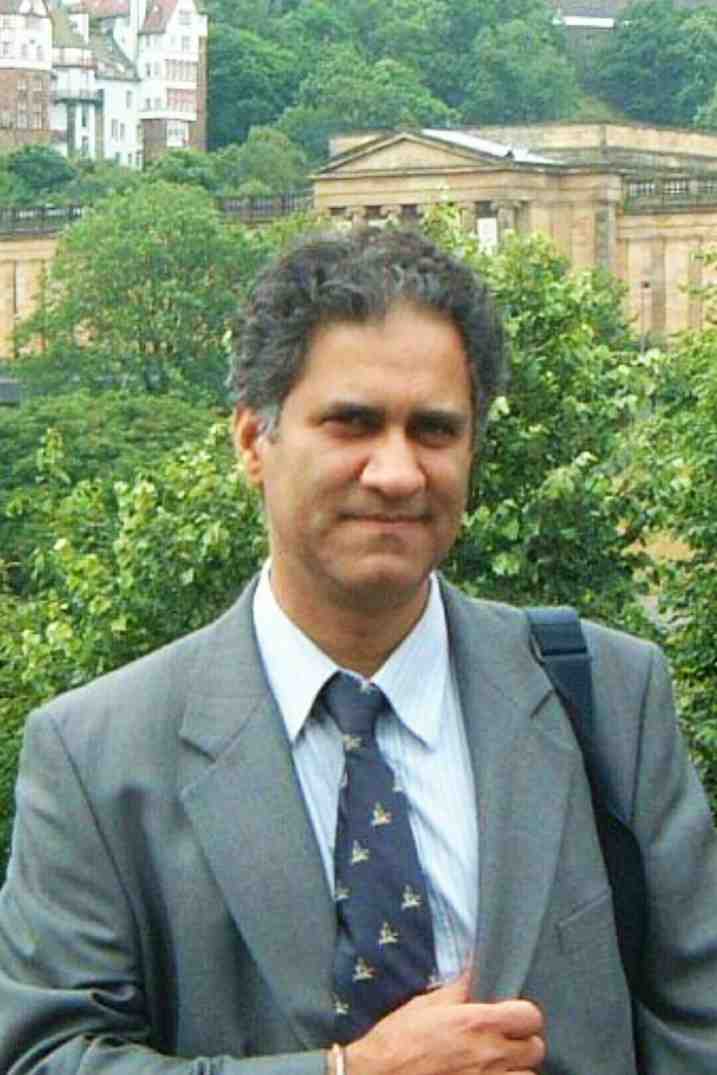AUCTORES
Globalize your Research
Short communication | DOI: https://doi.org/10.31579/2690-1897/246
Grodno State Medical University, Gorkogo St, Grodno, Republic of Belarus.
*Corresponding Author: Bon E.I, Grodno State Medical University, Gorkogo St, Grodno, Republic of Belarus.
Citation: Bon E.I, Maksimovich N.Ye, Otlivanchik N.I, Kazakevich S.D, (2025), Structure and Functional Organization of the Limbic System, J, Surgical Case Reports and Images, 8(3); DOI:10.31579/2690-1897/246
Copyright: © 2025, Bon E.I. This is an open access article distributed under the Creative Commons Attribution License, which permits unrestricted use, distribution, and reproduction in any medium, provided the original work is properly cited.
Received: 03 March 2025 | Accepted: 13 March 2025 | Published: 20 March 2025
Keywords: structure; functional organization; limbic system
The limbic system includes extensive structures of the brain that are of primary importance, on the one hand, in the implementation of motivational-emotional reactions of animals, and on the other hand, in the organization of learning and memory processes. Scientific views on the structural and functional organization of the limbic system were formed under the influence of classical works, which revealed some aspects of the role of the forebrain in the regulation of behavior. However, experimental studies and theoretical works were still of decisive importance, becoming a turning point in the study of neurophysiological correlates of motivational-emotional reactions.
The limbic system includes extensive structures of the brain that are of primary importance, on the one hand, in the implementation of motivational-emotional reactions of animals, and on the other hand, in the organization of learning and memory processes. Scientific views on the structural and functional organization of the limbic system were formed under the influence of classical works, which revealed some aspects of the role of the forebrain in the regulation of behavior [1-5]. However, experimental studies and theoretical works were still of decisive importance, becoming a turning point in the study of neurophysiological correlates of motivational-emotional reactions. Studying the effect of damage to the temporal region of the neocortex and paleocortex on lower monkeys, dramatic changes in their behavior were discovered, expressed in the fact that the monkeys became tame, hypoactive, hyperphagic and were characterized by physical blindness, emotional lethargy, loss of fear and aggression, and hypersexuality. These observations were completely new, especially against the background of the prevailing opinion among anatomists about the functions of the so-called olfactory brain, the system of which included formations of the most rostral end of the forebrain up to the mesencephalon [4]. It is all the more remarkable that it was specialists in brain anatomy who questioned the traditional concept of the highly specialized functions of the olfactory brain and suggested that a large part of this system was involved in the regulation of affective behavior, and not olfaction. Based on studies in which a large limbic lobe was isolated at the level of the cerebral cortex, a "circle" of interconnected neural structures was described, including the cingulate gyrus, hippocampus, mammillary bodies, anterior nuclei of the thalamus and again the cingulate gyrus, and ensuring the emergence and course of emotions [3]. At the same time, the existence of numerous connections between the rostral elements of the limbic system and the hypothalamus was established. Later, this theory was revised and significantly developed. It has been suggested that the limbic system (the “visceral brain”) is important not only in regulating emotional behavior, but also in correcting internal and external signals entering the brain [5-7]. Currently, the limbic system unites brain structures of various levels and structures. The tendency to expand the boundaries of the limbic system, observed recently, should not be considered incorrect, since in fact, this system functionally integrates brain structures of mesodiencephalic, subcortical and cortical origin [7-8]. The cortical structures included in the limbic system, for their part, can be divided into two groups: the "paleocortex" or "allocortex" and the "paraallocortex", which differ significantly in their structure and location. Phylogenetically more ancient paleocortical structures meet the criteria of the "cortex" and consist of at least three layers. This group includes the hippocampus (Ammon's horn and dentate gyrus), the piriform lobe (prepyriform cortex, periamygdaloid cortex, entorhinal area), olfactory bulbs and olfactory tubercle. The paraallocortical group of limbic system structures includes only those areas of the cortex that occupy an intermediate position between the phylogenetically old paleocortex and the phylogenetically new neocortex. These include the cingulate gyrus, or limbic cortex, the presubiculum, and the frontoparietal cortex [7-9]. An important group of limbic system structures are subcortical formations that are closely related to the cortical structures of the limbic system. Of these formations, the most important role in organizing motivated behavior is currently attributed to the hypothalamus, amygdala, septum pellucidum, anteromedial nuclei of the thalamus, and part of the reticular formation [9-15]. Thus, the limbic system unites structures that are very different in their cytoarchitecture. Subtle neuromorphological methods have revealed the most important connections between individual structures of the limbic system, on the one hand, and between the limbic system and other brain systems (with the reticular formation, basal ganglia and neocortex), on the other. In terms of elucidating the neural mechanisms of motivated behavior, the greatest interest is aroused by the connections of the hippocampus and amygdala with mesodiencephalic structures. Despite the fact that the hippocampus and amygdala differ from each other cytoarchitectonically, their projections with diencephalic structures are strikingly similar [11-15]. The hippocampus, as a cortical structure, is organized according to the screen principle. The cytoarchitectonic division of the hippocampus occurs based on the arrangement of pyramidal cells. The hippocampus is divided into two main areas: the upper and lower. The upper area differs from the lower by a more compact arrangement of pyramidal neurons. Having studied the cytoarchitectonic structure of the hippocampus in detail, four fields are distinguished: САХ, СА2, СА3, СА4. The CAX field corresponds to the upper area, its pyramidal neurons are located very densely and form two layers. The CA3 field corresponds to the lower area, the pyramidal neurons of this field are larger than in the CAX field and are located less compactly. The CA2 field lies between the CA4 and CA3 fields and consists of large pyramidal cells. Modified pyramids are presented in the CA4 field, located in a less organized manner. This field is located in the hilus and is considered part of the dentate fascia [15-17]. The hippocampus has a clearly organized structure in cross-section as well. Seven layers can be distinguished in it: 1) stratum moleculare, 2) stratum lacunosum, 3) stratum radiatum, 4) stratum pyramidale, 5) stratum oriens, 6) alveus and 7) epithelial zone. It is characteristic that in all these layers a certain organization of afferents is outlined. In the first layer, located on the border of the hippocampus and the dentate fascia, there is a bundle of axons entering the hippocampus from the subiculum, and in the second layer there is a powerful bundle of axons originating from the upper part of the hippocampus and directed to the subiculum. In the second layer of the CA4 field there are also Schaffer collaterals connecting the cells of the CA3 and CA4 fields with the apical dendrites of the pyramidal cells of the CA1 field. In the CA3 and CA4 fields, an additional layer, stratum lucidum, is distinguished, where the mossy fibers of the dentate fascia end. In the third layer, axons of various origins end on the trunks of apical dendrites. The fourth layer, i.e. the layer of pyramidal cells, has a peculiar structure; their dendrites are directed both toward the stratum moleculare and toward the alveus, which is why they are often called "double pyramids." [16-18] The axons of the pyramidal cells go towards the alveus. Some of them have collaterals in the stratum oriens that terminate in the same layer of other fields. The main trunks of the axons go along the brainstem and, entering the fornix system, reach various parts of the forebrain and diencephalon [15-20]. The pyramidal layer is followed by the stratum oriens, which contains polymorphic cells, including basket cells. Below it is the sixth layer (alveus), which is white matter and contains myelinated fibers of pyramidal cells of all fields of the hippocampus. The seventh layer, i.e. the epithelial zone, is essentially the wall of the lateral ventricle, and it can be omitted from the neuronal organization of the hippocampus [14-20]. The hippocamps of the right and left hemispheres are connected to each other by fibers that form the hippocampal commissure - the psalterium. The clear topographic localization of afferent endings on the pyramidal cells of the hippocampus creates a good opportunity for the use of electrophysiological methods to clarify the functional properties of synaptic contacts [21-26]. The projection pathways of the hippocampus have long attracted the attention of researchers. The fornix system was described in detail long ago, being considered its only hippocampal output. Later, other pathways were identified, but the fornix is still considered the main formation through which the hippocampus is connected with various mesodiencephalic structures. The fibers of the fornix at the level of the septum are divided into two main bundles: the compact column of the fornix and the more diffuse precommissural fornix [20-24], which contains fibers coming from the CA3 and CA4 layers of the hippocampus and ending mainly in the nuclei of the septum. Most of the fibers are interrupted in the lateral nucleus, and the other, passing further, gives endings on the cells of the lateral preoptic area and the lateral hypothalamus. From these formations, the descending part of the medial forebrain bundle begins, forming a powerful system of connections of the forebrain with non-specific structures of the midbrain and pons. The compact column of the fornix passes behind the anterior commissure and is directed to the mamillary bodies. However, some of the fibers, before reaching the mamillary bodies, depart from the column and are directed to the anterior nuclei of the thalamus, as well as to its rostral intralaminar and medial regions. Most of the fibers of the column of the fornix terminate in the mamillary body, and some bypass it and, passing in the dorsal direction, contact the cells of the rostral part of the central gray matter of the midbrain. The mamillary tract, composed of axons of the cells of the mamillary bodies, is divided into two bundles: the mammillothalamic tract, going to the nuclei of the anterior thalamus, as well as to its nonspecific nuclei, and the mammillotegmental tract, going to the tegmental nuclei. In addition to indirect connections via the mammillary bodies, the hippocampus is connected to the anterior nuclei of the thalamus and the direct pathway. The anterior nuclei of the thalamus, which belong to the limbic system, project to the limbic cortex [14-20]. The limbic cortex is considered the highest section of the entire system and consists of the cingulate gyrus and the entorhinal cortex. The cingulate gyrus, located above the corpus callosum, on the medial wall of the hemisphere, is an intermediate formation between the paleocortex and neocortex; in its complex cellular composition and six layers, it is similar to the neocortical formation. The entorhinal region lies on the mediobasal surface of the hemisphere and through a number of complex links (parasubiculum and subiculum) passes into the hippocampus. The limbic cortex receives afferent connections from the neocortex, mainly from the secondary and associative zones of the posterior part of the hemispheres and the frontal-premotor zones [9-12]. The cingulate gyrus sends projections to the entorhinal region, which in turn is the main source of cortical afferents of the hippocampus. Thus the main limbic circle is closed. Bilateral connections between individual links of this circle are apparently necessary not only for normal functioning, but also for its structural existence. This is indicated by transneuronal degeneration in various limbic structures when the cingulate gyrus is removed [15].
It is now well known that both archipalaeocortical and neocortical formations are structurally and functionally connected with such subcortical links of the limbic system as the hypothalamus and amygdala, as well as the reticular formation, a significant part of which belongs to the limbic system. The main input of the hippocampus through the septum is made up of projections from the reticular formation and hypothalamus, and the septum, an important formation of the limbic system, is located precisely on the path between the hippocampus and the reticulohypothalamic structures [15]. Fibers directed from the mesodiencephalic structures mainly switch in the medial nucleus, which occupies a central place in the septum and in the ventral direction passes into the nucleus of the diagonal fasciculus. In the medial nucleus, medium and large multipolar and spindle-shaped neurons are located in the form of separate clusters. The lateral nucleus of the septum consists of uniform, rounded or multipolar cells of medium size. Ascending projections from the medial septum go to the hippocampus. No projections to the hippocampus are traced from the lateral nucleus. The lateral nucleus sends fibers to the medial septum. However, the hippocampal descending pathways project to the lateral nucleus of the septum and through it switch to the medial nucleus, due to which the cyclic connection is closed between both the hippocampus and the septum [18]. The most important subcortical structure of the limbic system, closely connected with the hypothalamus, is the amygdala. Unlike other structures of the limbic system, it is closely connected with the basal ganglia. The amygdala is a symmetrical structure located in the ventromedial part of the rostral pole of the temporal lobe. In the phylogenetic series, the presence of the amygdala is observed already in cyclostomes, and it reaches full development in mammals. In the amygdala, two parts can be distinguished: the more ancient cortico-medial part and the younger basolateral part. The cortico-medial part is located medially and consists of the cortical, medial and central nuclei. The basolateral part consists of the lateral and basal nuclei []4-11. The afferent pathways of the amygdala can be classified as olfactory, diencephalic, and cortical. The olfactory bulbs project first to the piriform cortex and are connected to the amygdala through it. Diencephalic afferent fibers go to the amygdala through the corticostriatal pathways and the medial association bundle. A connection has also been established between the dorsal thalamus and the amygdala. Bilateral connections between the piriform cortex and the basolateral part of the amygdala are realized through the longitudinal association bundle. The amygdala also receives fibers from the temporal and orbital cortex. In addition, the evoked potential method has shown close connections between the entire basofrontotemporooccipital cortex and the amygdala. For its part, the amygdala also actively influences other structures of the limbic system. The main efferent pathways of the amygdala can be grouped into two systems: the dorsal and ventral amygdalofugal fiber systems. The former conducts impulses mainly from the corticomedial and partly from the basolateral part of the amygdala, the latter originates from the basolateral region [13-17]. The corpus callosum is divided into commissural, postcommissural, and supracommissural parts. The postcommissural fibers terminate in the rostral hypothalamus, but some of them are associated with the medial forebrain bundle. The supracommissural component terminates in the ventromedial hypothalamus. The ventral amygdala-lofugal system terminates mainly in the lateral hypothalamus. The amygdala also projects to the thalamus [12]. There is also an amygdala-thalamo-orbitofrontal connection system through which the amygdala actively influences the frontal association area of the cortex. In discussing the significance of the efferent connections of the amygdala, it is worth paying special attention to the fact that the projection pathways of the amygdala and hippocampus have a common termination zone in the diencephalic structures and that the fiber systems originating in these areas can serve as secondary pathways along which nerve impulses originating in the hippocampus and amygdala are propagated [21-22]. The diencephalic link of the limbic system is the hypothalamus. The hypothalamic groove, located as a notch in the wall of the ventricle, is the border of the hypothalamus and thalamus. The rostral part of the hypothalamus merges with the preoptic area, which is a telencephalic structure by genesis, but due to its close connection with the anterior hypothalamus is rightfully considered its part. The posterior border of the hypothalamus is a conventional plane drawn behind the mammillary bodies. Laterally, the hypothalamus extends to the ventral part of the thalamus, the indefinite zone (zona incerta) and the nuclei of Forel's field. The hypothalamus is divided into right and left halves by the third ventricle. In the literature, there is a division of the hypothalamus into different zones and areas both in the rostrocaudal and mediolateral directions. The hypothalamus can be divided into the following zones: 1) the preoptic area with its nuclei, 2) the supraoptic area with the supraoptic, paraventricular, suprachiasmatic, and anterior hypothalamic nuclei, 3) the tuberal area with the dorsomedial, ventromedial, arcuate, lateral hypothalamic, and posterior hypothalamic nuclei, 4) the mamillary area with the medial mamillary, lateral mamillary, intercalary, premamillary, and supramamillary nuclei [14-26]. The hypothalamus receives extensive afferent fibers from various areas of the cerebral cortex, as well as from the thalamus, globus pallidus, amygdala, visual system, reticular formation, spinal cord, and other structures of the central nervous system. Because of these connections, the hypothalamus can be considered as a nodal point of an extensive neural mechanism extending from the medial wall of the hemispheres caudally to the inferior border of the midbrain. Important projections of the hippocampus and amygdala to the hypothalamus through the fornix and the ventral amygdalofugal pathway were indicated in the description of the main limbic circle. In addition, many ascending and descending fibers of the medial forebrain bundle connect the rostral structures of the limbic system with the preoptic area and the lateral hypothalamus. The corticohypothalamic ones are of great functional importance. Based on electrophysiological data, it was suggested that there are direct connections between the premotor, sensorimotor, suprasylvian and ectosylvian areas with the anterior, dorsomedial, posterior and mammillary nuclei of the hypothalamus. The frontal area of the cortex sends projections to the hypothalamus through the septum. Some other cortical projections come to the hypothalamus through the anterior nuclei of the thalamus, thereby creating cyclic connections between these formations of the limbic system. Direct mesencephalic tracts go from the midbrain to the hypothalamus [9-17]. In describing the main limbic circle, the importance of the mammillothalamic tract was pointed out, through which the hypothalamus can actively influence the limbic nuclei of the thalamus and the limbic cortex. An extensive periventricular system of fibers originates from the posterior hypothalamus, tuberal and supraoptic nuclei. Some of these fibers terminate in the midline nuclei of the thalamus, as well as in its dorsomedial nuclei. The majority terminate in the tectal and tegmental nuclei of the midbrain and pons. Commissural pathways and intrahypothalamic connections play an important role in the functional organization of various areas and nuclei of the hypothalamus. Most of the intrahypothalamic connections are formed by fibers of the ventromedial nucleus, contacting neurons of the lateral hypothalamus and dorsomedial nucleus [12-19]. A variety of methodological approaches are used to study the functional organization of the limbic system and its individual links. These approaches are: 1) studying the effect of damage to limbic structures on various types of behavior, 2) studying the effect of direct electrical and chemical stimulation of limbic structures, and 3) studying the dynamics of electrical activity of limbic system structures during behavioral acts. Neuropharmacological and neurochemical methods of analyzing the functional organization of the limbic system have recently been fruitfully combined with these three main methods. The complexity of the structure of the limbic system significantly limits the capabilities of these methods. In particular, it is very difficult, and sometimes impossible, to isolate a particular structure from the entire system. Extreme caution is also required when directly stimulating individual limbic structures, since there is a high probability of spreading loops of irritating electrical current, as well as diffusion of the chemical stimulant to neighboring areas of not only limbic, but also other origin. The possibilities of interpreting the results of studying the dynamics of electrical activity of limbic structures during the implementation of motivated behavior are no less limited [17-23]. Despite the above, the limbic system has such a specific relationship to the organization of motivated behavior and to the process of learning and memory that the information obtained using these methods has great scientific and cognitive value.
Clearly Auctoresonline and particularly Psychology and Mental Health Care Journal is dedicated to improving health care services for individuals and populations. The editorial boards' ability to efficiently recognize and share the global importance of health literacy with a variety of stakeholders. Auctoresonline publishing platform can be used to facilitate of optimal client-based services and should be added to health care professionals' repertoire of evidence-based health care resources.

Journal of Clinical Cardiology and Cardiovascular Intervention The submission and review process was adequate. However I think that the publication total value should have been enlightened in early fases. Thank you for all.

Journal of Women Health Care and Issues By the present mail, I want to say thank to you and tour colleagues for facilitating my published article. Specially thank you for the peer review process, support from the editorial office. I appreciate positively the quality of your journal.
Journal of Clinical Research and Reports I would be very delighted to submit my testimonial regarding the reviewer board and the editorial office. The reviewer board were accurate and helpful regarding any modifications for my manuscript. And the editorial office were very helpful and supportive in contacting and monitoring with any update and offering help. It was my pleasure to contribute with your promising Journal and I am looking forward for more collaboration.

We would like to thank the Journal of Thoracic Disease and Cardiothoracic Surgery because of the services they provided us for our articles. The peer-review process was done in a very excellent time manner, and the opinions of the reviewers helped us to improve our manuscript further. The editorial office had an outstanding correspondence with us and guided us in many ways. During a hard time of the pandemic that is affecting every one of us tremendously, the editorial office helped us make everything easier for publishing scientific work. Hope for a more scientific relationship with your Journal.

The peer-review process which consisted high quality queries on the paper. I did answer six reviewers’ questions and comments before the paper was accepted. The support from the editorial office is excellent.

Journal of Neuroscience and Neurological Surgery. I had the experience of publishing a research article recently. The whole process was simple from submission to publication. The reviewers made specific and valuable recommendations and corrections that improved the quality of my publication. I strongly recommend this Journal.

Dr. Katarzyna Byczkowska My testimonial covering: "The peer review process is quick and effective. The support from the editorial office is very professional and friendly. Quality of the Clinical Cardiology and Cardiovascular Interventions is scientific and publishes ground-breaking research on cardiology that is useful for other professionals in the field.

Thank you most sincerely, with regard to the support you have given in relation to the reviewing process and the processing of my article entitled "Large Cell Neuroendocrine Carcinoma of The Prostate Gland: A Review and Update" for publication in your esteemed Journal, Journal of Cancer Research and Cellular Therapeutics". The editorial team has been very supportive.

Testimony of Journal of Clinical Otorhinolaryngology: work with your Reviews has been a educational and constructive experience. The editorial office were very helpful and supportive. It was a pleasure to contribute to your Journal.

Dr. Bernard Terkimbi Utoo, I am happy to publish my scientific work in Journal of Women Health Care and Issues (JWHCI). The manuscript submission was seamless and peer review process was top notch. I was amazed that 4 reviewers worked on the manuscript which made it a highly technical, standard and excellent quality paper. I appreciate the format and consideration for the APC as well as the speed of publication. It is my pleasure to continue with this scientific relationship with the esteem JWHCI.

This is an acknowledgment for peer reviewers, editorial board of Journal of Clinical Research and Reports. They show a lot of consideration for us as publishers for our research article “Evaluation of the different factors associated with side effects of COVID-19 vaccination on medical students, Mutah university, Al-Karak, Jordan”, in a very professional and easy way. This journal is one of outstanding medical journal.
Dear Hao Jiang, to Journal of Nutrition and Food Processing We greatly appreciate the efficient, professional and rapid processing of our paper by your team. If there is anything else we should do, please do not hesitate to let us know. On behalf of my co-authors, we would like to express our great appreciation to editor and reviewers.

As an author who has recently published in the journal "Brain and Neurological Disorders". I am delighted to provide a testimonial on the peer review process, editorial office support, and the overall quality of the journal. The peer review process at Brain and Neurological Disorders is rigorous and meticulous, ensuring that only high-quality, evidence-based research is published. The reviewers are experts in their fields, and their comments and suggestions were constructive and helped improve the quality of my manuscript. The review process was timely and efficient, with clear communication from the editorial office at each stage. The support from the editorial office was exceptional throughout the entire process. The editorial staff was responsive, professional, and always willing to help. They provided valuable guidance on formatting, structure, and ethical considerations, making the submission process seamless. Moreover, they kept me informed about the status of my manuscript and provided timely updates, which made the process less stressful. The journal Brain and Neurological Disorders is of the highest quality, with a strong focus on publishing cutting-edge research in the field of neurology. The articles published in this journal are well-researched, rigorously peer-reviewed, and written by experts in the field. The journal maintains high standards, ensuring that readers are provided with the most up-to-date and reliable information on brain and neurological disorders. In conclusion, I had a wonderful experience publishing in Brain and Neurological Disorders. The peer review process was thorough, the editorial office provided exceptional support, and the journal's quality is second to none. I would highly recommend this journal to any researcher working in the field of neurology and brain disorders.

Dear Agrippa Hilda, Journal of Neuroscience and Neurological Surgery, Editorial Coordinator, I trust this message finds you well. I want to extend my appreciation for considering my article for publication in your esteemed journal. I am pleased to provide a testimonial regarding the peer review process and the support received from your editorial office. The peer review process for my paper was carried out in a highly professional and thorough manner. The feedback and comments provided by the authors were constructive and very useful in improving the quality of the manuscript. This rigorous assessment process undoubtedly contributes to the high standards maintained by your journal.

International Journal of Clinical Case Reports and Reviews. I strongly recommend to consider submitting your work to this high-quality journal. The support and availability of the Editorial staff is outstanding and the review process was both efficient and rigorous.

Thank you very much for publishing my Research Article titled “Comparing Treatment Outcome Of Allergic Rhinitis Patients After Using Fluticasone Nasal Spray And Nasal Douching" in the Journal of Clinical Otorhinolaryngology. As Medical Professionals we are immensely benefited from study of various informative Articles and Papers published in this high quality Journal. I look forward to enriching my knowledge by regular study of the Journal and contribute my future work in the field of ENT through the Journal for use by the medical fraternity. The support from the Editorial office was excellent and very prompt. I also welcome the comments received from the readers of my Research Article.

Dear Erica Kelsey, Editorial Coordinator of Cancer Research and Cellular Therapeutics Our team is very satisfied with the processing of our paper by your journal. That was fast, efficient, rigorous, but without unnecessary complications. We appreciated the very short time between the submission of the paper and its publication on line on your site.

I am very glad to say that the peer review process is very successful and fast and support from the Editorial Office. Therefore, I would like to continue our scientific relationship for a long time. And I especially thank you for your kindly attention towards my article. Have a good day!

"We recently published an article entitled “Influence of beta-Cyclodextrins upon the Degradation of Carbofuran Derivatives under Alkaline Conditions" in the Journal of “Pesticides and Biofertilizers” to show that the cyclodextrins protect the carbamates increasing their half-life time in the presence of basic conditions This will be very helpful to understand carbofuran behaviour in the analytical, agro-environmental and food areas. We greatly appreciated the interaction with the editor and the editorial team; we were particularly well accompanied during the course of the revision process, since all various steps towards publication were short and without delay".

I would like to express my gratitude towards you process of article review and submission. I found this to be very fair and expedient. Your follow up has been excellent. I have many publications in national and international journal and your process has been one of the best so far. Keep up the great work.

We are grateful for this opportunity to provide a glowing recommendation to the Journal of Psychiatry and Psychotherapy. We found that the editorial team were very supportive, helpful, kept us abreast of timelines and over all very professional in nature. The peer review process was rigorous, efficient and constructive that really enhanced our article submission. The experience with this journal remains one of our best ever and we look forward to providing future submissions in the near future.

I am very pleased to serve as EBM of the journal, I hope many years of my experience in stem cells can help the journal from one way or another. As we know, stem cells hold great potential for regenerative medicine, which are mostly used to promote the repair response of diseased, dysfunctional or injured tissue using stem cells or their derivatives. I think Stem Cell Research and Therapeutics International is a great platform to publish and share the understanding towards the biology and translational or clinical application of stem cells.

I would like to give my testimony in the support I have got by the peer review process and to support the editorial office where they were of asset to support young author like me to be encouraged to publish their work in your respected journal and globalize and share knowledge across the globe. I really give my great gratitude to your journal and the peer review including the editorial office.

I am delighted to publish our manuscript entitled "A Perspective on Cocaine Induced Stroke - Its Mechanisms and Management" in the Journal of Neuroscience and Neurological Surgery. The peer review process, support from the editorial office, and quality of the journal are excellent. The manuscripts published are of high quality and of excellent scientific value. I recommend this journal very much to colleagues.

Dr.Tania Muñoz, My experience as researcher and author of a review article in The Journal Clinical Cardiology and Interventions has been very enriching and stimulating. The editorial team is excellent, performs its work with absolute responsibility and delivery. They are proactive, dynamic and receptive to all proposals. Supporting at all times the vast universe of authors who choose them as an option for publication. The team of review specialists, members of the editorial board, are brilliant professionals, with remarkable performance in medical research and scientific methodology. Together they form a frontline team that consolidates the JCCI as a magnificent option for the publication and review of high-level medical articles and broad collective interest. I am honored to be able to share my review article and open to receive all your comments.

“The peer review process of JPMHC is quick and effective. Authors are benefited by good and professional reviewers with huge experience in the field of psychology and mental health. The support from the editorial office is very professional. People to contact to are friendly and happy to help and assist any query authors might have. Quality of the Journal is scientific and publishes ground-breaking research on mental health that is useful for other professionals in the field”.

Dear editorial department: On behalf of our team, I hereby certify the reliability and superiority of the International Journal of Clinical Case Reports and Reviews in the peer review process, editorial support, and journal quality. Firstly, the peer review process of the International Journal of Clinical Case Reports and Reviews is rigorous, fair, transparent, fast, and of high quality. The editorial department invites experts from relevant fields as anonymous reviewers to review all submitted manuscripts. These experts have rich academic backgrounds and experience, and can accurately evaluate the academic quality, originality, and suitability of manuscripts. The editorial department is committed to ensuring the rigor of the peer review process, while also making every effort to ensure a fast review cycle to meet the needs of authors and the academic community. Secondly, the editorial team of the International Journal of Clinical Case Reports and Reviews is composed of a group of senior scholars and professionals with rich experience and professional knowledge in related fields. The editorial department is committed to assisting authors in improving their manuscripts, ensuring their academic accuracy, clarity, and completeness. Editors actively collaborate with authors, providing useful suggestions and feedback to promote the improvement and development of the manuscript. We believe that the support of the editorial department is one of the key factors in ensuring the quality of the journal. Finally, the International Journal of Clinical Case Reports and Reviews is renowned for its high- quality articles and strict academic standards. The editorial department is committed to publishing innovative and academically valuable research results to promote the development and progress of related fields. The International Journal of Clinical Case Reports and Reviews is reasonably priced and ensures excellent service and quality ratio, allowing authors to obtain high-level academic publishing opportunities in an affordable manner. I hereby solemnly declare that the International Journal of Clinical Case Reports and Reviews has a high level of credibility and superiority in terms of peer review process, editorial support, reasonable fees, and journal quality. Sincerely, Rui Tao.

Clinical Cardiology and Cardiovascular Interventions I testity the covering of the peer review process, support from the editorial office, and quality of the journal.

Clinical Cardiology and Cardiovascular Interventions, we deeply appreciate the interest shown in our work and its publication. It has been a true pleasure to collaborate with you. The peer review process, as well as the support provided by the editorial office, have been exceptional, and the quality of the journal is very high, which was a determining factor in our decision to publish with you.
The peer reviewers process is quick and effective, the supports from editorial office is excellent, the quality of journal is high. I would like to collabroate with Internatioanl journal of Clinical Case Reports and Reviews journal clinically in the future time.

Clinical Cardiology and Cardiovascular Interventions, I would like to express my sincerest gratitude for the trust placed in our team for the publication in your journal. It has been a true pleasure to collaborate with you on this project. I am pleased to inform you that both the peer review process and the attention from the editorial coordination have been excellent. Your team has worked with dedication and professionalism to ensure that your publication meets the highest standards of quality. We are confident that this collaboration will result in mutual success, and we are eager to see the fruits of this shared effort.

Dear Dr. Jessica Magne, Editorial Coordinator 0f Clinical Cardiology and Cardiovascular Interventions, I hope this message finds you well. I want to express my utmost gratitude for your excellent work and for the dedication and speed in the publication process of my article titled "Navigating Innovation: Qualitative Insights on Using Technology for Health Education in Acute Coronary Syndrome Patients." I am very satisfied with the peer review process, the support from the editorial office, and the quality of the journal. I hope we can maintain our scientific relationship in the long term.
Dear Monica Gissare, - Editorial Coordinator of Nutrition and Food Processing. ¨My testimony with you is truly professional, with a positive response regarding the follow-up of the article and its review, you took into account my qualities and the importance of the topic¨.

Dear Dr. Jessica Magne, Editorial Coordinator 0f Clinical Cardiology and Cardiovascular Interventions, The review process for the article “The Handling of Anti-aggregants and Anticoagulants in the Oncologic Heart Patient Submitted to Surgery” was extremely rigorous and detailed. From the initial submission to the final acceptance, the editorial team at the “Journal of Clinical Cardiology and Cardiovascular Interventions” demonstrated a high level of professionalism and dedication. The reviewers provided constructive and detailed feedback, which was essential for improving the quality of our work. Communication was always clear and efficient, ensuring that all our questions were promptly addressed. The quality of the “Journal of Clinical Cardiology and Cardiovascular Interventions” is undeniable. It is a peer-reviewed, open-access publication dedicated exclusively to disseminating high-quality research in the field of clinical cardiology and cardiovascular interventions. The journal's impact factor is currently under evaluation, and it is indexed in reputable databases, which further reinforces its credibility and relevance in the scientific field. I highly recommend this journal to researchers looking for a reputable platform to publish their studies.

Dear Editorial Coordinator of the Journal of Nutrition and Food Processing! "I would like to thank the Journal of Nutrition and Food Processing for including and publishing my article. The peer review process was very quick, movement and precise. The Editorial Board has done an extremely conscientious job with much help, valuable comments and advices. I find the journal very valuable from a professional point of view, thank you very much for allowing me to be part of it and I would like to participate in the future!”

Dealing with The Journal of Neurology and Neurological Surgery was very smooth and comprehensive. The office staff took time to address my needs and the response from editors and the office was prompt and fair. I certainly hope to publish with this journal again.Their professionalism is apparent and more than satisfactory. Susan Weiner

My Testimonial Covering as fellowing: Lin-Show Chin. The peer reviewers process is quick and effective, the supports from editorial office is excellent, the quality of journal is high. I would like to collabroate with Internatioanl journal of Clinical Case Reports and Reviews.

My experience publishing in Psychology and Mental Health Care was exceptional. The peer review process was rigorous and constructive, with reviewers providing valuable insights that helped enhance the quality of our work. The editorial team was highly supportive and responsive, making the submission process smooth and efficient. The journal's commitment to high standards and academic rigor makes it a respected platform for quality research. I am grateful for the opportunity to publish in such a reputable journal.
My experience publishing in International Journal of Clinical Case Reports and Reviews was exceptional. I Come forth to Provide a Testimonial Covering the Peer Review Process and the editorial office for the Professional and Impartial Evaluation of the Manuscript.

I would like to offer my testimony in the support. I have received through the peer review process and support the editorial office where they are to support young authors like me, encourage them to publish their work in your esteemed journals, and globalize and share knowledge globally. I really appreciate your journal, peer review, and editorial office.
Dear Agrippa Hilda- Editorial Coordinator of Journal of Neuroscience and Neurological Surgery, "The peer review process was very quick and of high quality, which can also be seen in the articles in the journal. The collaboration with the editorial office was very good."

I would like to express my sincere gratitude for the support and efficiency provided by the editorial office throughout the publication process of my article, “Delayed Vulvar Metastases from Rectal Carcinoma: A Case Report.” I greatly appreciate the assistance and guidance I received from your team, which made the entire process smooth and efficient. The peer review process was thorough and constructive, contributing to the overall quality of the final article. I am very grateful for the high level of professionalism and commitment shown by the editorial staff, and I look forward to maintaining a long-term collaboration with the International Journal of Clinical Case Reports and Reviews.
To Dear Erin Aust, I would like to express my heartfelt appreciation for the opportunity to have my work published in this esteemed journal. The entire publication process was smooth and well-organized, and I am extremely satisfied with the final result. The Editorial Team demonstrated the utmost professionalism, providing prompt and insightful feedback throughout the review process. Their clear communication and constructive suggestions were invaluable in enhancing my manuscript, and their meticulous attention to detail and dedication to quality are truly commendable. Additionally, the support from the Editorial Office was exceptional. From the initial submission to the final publication, I was guided through every step of the process with great care and professionalism. The team's responsiveness and assistance made the entire experience both easy and stress-free. I am also deeply impressed by the quality and reputation of the journal. It is an honor to have my research featured in such a respected publication, and I am confident that it will make a meaningful contribution to the field.

"I am grateful for the opportunity of contributing to [International Journal of Clinical Case Reports and Reviews] and for the rigorous review process that enhances the quality of research published in your esteemed journal. I sincerely appreciate the time and effort of your team who have dedicatedly helped me in improvising changes and modifying my manuscript. The insightful comments and constructive feedback provided have been invaluable in refining and strengthening my work".

I thank the ‘Journal of Clinical Research and Reports’ for accepting this article for publication. This is a rigorously peer reviewed journal which is on all major global scientific data bases. I note the review process was prompt, thorough and professionally critical. It gave us an insight into a number of important scientific/statistical issues. The review prompted us to review the relevant literature again and look at the limitations of the study. The peer reviewers were open, clear in the instructions and the editorial team was very prompt in their communication. This journal certainly publishes quality research articles. I would recommend the journal for any future publications.

Dear Jessica Magne, with gratitude for the joint work. Fast process of receiving and processing the submitted scientific materials in “Clinical Cardiology and Cardiovascular Interventions”. High level of competence of the editors with clear and correct recommendations and ideas for enriching the article.

We found the peer review process quick and positive in its input. The support from the editorial officer has been very agile, always with the intention of improving the article and taking into account our subsequent corrections.

My article, titled 'No Way Out of the Smartphone Epidemic Without Considering the Insights of Brain Research,' has been republished in the International Journal of Clinical Case Reports and Reviews. The review process was seamless and professional, with the editors being both friendly and supportive. I am deeply grateful for their efforts.
To Dear Erin Aust – Editorial Coordinator of Journal of General Medicine and Clinical Practice! I declare that I am absolutely satisfied with your work carried out with great competence in following the manuscript during the various stages from its receipt, during the revision process to the final acceptance for publication. Thank Prof. Elvira Farina

Dear Jessica, and the super professional team of the ‘Clinical Cardiology and Cardiovascular Interventions’ I am sincerely grateful to the coordinated work of the journal team for the no problem with the submission of my manuscript: “Cardiometabolic Disorders in A Pregnant Woman with Severe Preeclampsia on the Background of Morbid Obesity (Case Report).” The review process by 5 experts was fast, and the comments were professional, which made it more specific and academic, and the process of publication and presentation of the article was excellent. I recommend that my colleagues publish articles in this journal, and I am interested in further scientific cooperation. Sincerely and best wishes, Dr. Oleg Golyanovskiy.

Dear Ashley Rosa, Editorial Coordinator of the journal - Psychology and Mental Health Care. " The process of obtaining publication of my article in the Psychology and Mental Health Journal was positive in all areas. The peer review process resulted in a number of valuable comments, the editorial process was collaborative and timely, and the quality of this journal has been quickly noticed, resulting in alternative journals contacting me to publish with them." Warm regards, Susan Anne Smith, PhD. Australian Breastfeeding Association.

Dear Jessica Magne, Editorial Coordinator, Clinical Cardiology and Cardiovascular Interventions, Auctores Publishing LLC. I appreciate the journal (JCCI) editorial office support, the entire team leads were always ready to help, not only on technical front but also on thorough process. Also, I should thank dear reviewers’ attention to detail and creative approach to teach me and bring new insights by their comments. Surely, more discussions and introduction of other hemodynamic devices would provide better prevention and management of shock states. Your efforts and dedication in presenting educational materials in this journal are commendable. Best wishes from, Farahnaz Fallahian.
Dear Maria Emerson, Editorial Coordinator, International Journal of Clinical Case Reports and Reviews, Auctores Publishing LLC. I am delighted to have published our manuscript, "Acute Colonic Pseudo-Obstruction (ACPO): A rare but serious complication following caesarean section." I want to thank the editorial team, especially Maria Emerson, for their prompt review of the manuscript, quick responses to queries, and overall support. Yours sincerely Dr. Victor Olagundoye.

Dear Ashley Rosa, Editorial Coordinator, International Journal of Clinical Case Reports and Reviews. Many thanks for publishing this manuscript after I lost confidence the editors were most helpful, more than other journals Best wishes from, Susan Anne Smith, PhD. Australian Breastfeeding Association.

Dear Agrippa Hilda, Editorial Coordinator, Journal of Neuroscience and Neurological Surgery. The entire process including article submission, review, revision, and publication was extremely easy. The journal editor was prompt and helpful, and the reviewers contributed to the quality of the paper. Thank you so much! Eric Nussbaum, MD
Dr Hala Al Shaikh This is to acknowledge that the peer review process for the article ’ A Novel Gnrh1 Gene Mutation in Four Omani Male Siblings, Presentation and Management ’ sent to the International Journal of Clinical Case Reports and Reviews was quick and smooth. The editorial office was prompt with easy communication.

Dear Erin Aust, Editorial Coordinator, Journal of General Medicine and Clinical Practice. We are pleased to share our experience with the “Journal of General Medicine and Clinical Practice”, following the successful publication of our article. The peer review process was thorough and constructive, helping to improve the clarity and quality of the manuscript. We are especially thankful to Ms. Erin Aust, the Editorial Coordinator, for her prompt communication and continuous support throughout the process. Her professionalism ensured a smooth and efficient publication experience. The journal upholds high editorial standards, and we highly recommend it to fellow researchers seeking a credible platform for their work. Best wishes By, Dr. Rakhi Mishra.

Dear Jessica Magne, Editorial Coordinator, Clinical Cardiology and Cardiovascular Interventions, Auctores Publishing LLC. The peer review process of the journal of Clinical Cardiology and Cardiovascular Interventions was excellent and fast, as was the support of the editorial office and the quality of the journal. Kind regards Walter F. Riesen Prof. Dr. Dr. h.c. Walter F. Riesen.

Dear Ashley Rosa, Editorial Coordinator, International Journal of Clinical Case Reports and Reviews, Auctores Publishing LLC. Thank you for publishing our article, Exploring Clozapine's Efficacy in Managing Aggression: A Multiple Single-Case Study in Forensic Psychiatry in the international journal of clinical case reports and reviews. We found the peer review process very professional and efficient. The comments were constructive, and the whole process was efficient. On behalf of the co-authors, I would like to thank you for publishing this article. With regards, Dr. Jelle R. Lettinga.

Dear Clarissa Eric, Editorial Coordinator, Journal of Clinical Case Reports and Studies, I would like to express my deep admiration for the exceptional professionalism demonstrated by your journal. I am thoroughly impressed by the speed of the editorial process, the substantive and insightful reviews, and the meticulous preparation of the manuscript for publication. Additionally, I greatly appreciate the courteous and immediate responses from your editorial office to all my inquiries. Best Regards, Dariusz Ziora

Dear Chrystine Mejia, Editorial Coordinator, Journal of Neurodegeneration and Neurorehabilitation, Auctores Publishing LLC, We would like to thank the editorial team for the smooth and high-quality communication leading up to the publication of our article in the Journal of Neurodegeneration and Neurorehabilitation. The reviewers have extensive knowledge in the field, and their relevant questions helped to add value to our publication. Kind regards, Dr. Ravi Shrivastava.

Dear Clarissa Eric, Editorial Coordinator, Journal of Clinical Case Reports and Studies, Auctores Publishing LLC, USA Office: +1-(302)-520-2644. I would like to express my sincere appreciation for the efficient and professional handling of my case report by the ‘Journal of Clinical Case Reports and Studies’. The peer review process was not only fast but also highly constructive—the reviewers’ comments were clear, relevant, and greatly helped me improve the quality and clarity of my manuscript. I also received excellent support from the editorial office throughout the process. Communication was smooth and timely, and I felt well guided at every stage, from submission to publication. The overall quality and rigor of the journal are truly commendable. I am pleased to have published my work with Journal of Clinical Case Reports and Studies, and I look forward to future opportunities for collaboration. Sincerely, Aline Tollet, UCLouvain.

Dear Ms. Mayra Duenas, Editorial Coordinator, International Journal of Clinical Case Reports and Reviews. “The International Journal of Clinical Case Reports and Reviews represented the “ideal house” to share with the research community a first experience with the use of the Simeox device for speech rehabilitation. High scientific reputation and attractive website communication were first determinants for the selection of this Journal, and the following submission process exceeded expectations: fast but highly professional peer review, great support by the editorial office, elegant graphic layout. Exactly what a dynamic research team - also composed by allied professionals - needs!" From, Chiara Beccaluva, PT - Italy.

Dear Maria Emerson, Editorial Coordinator, we have deeply appreciated the professionalism demonstrated by the International Journal of Clinical Case Reports and Reviews. The reviewers have extensive knowledge of our field and have been very efficient and fast in supporting the process. I am really looking forward to further collaboration. Thanks. Best regards, Dr. Claudio Ligresti
Dear Chrystine Mejia, Editorial Coordinator, Journal of Neurodegeneration and Neurorehabilitation. “The peer review process was efficient and constructive, and the editorial office provided excellent communication and support throughout. The journal ensures scientific rigor and high editorial standards, while also offering a smooth and timely publication process. We sincerely appreciate the work of the editorial team in facilitating the dissemination of innovative approaches such as the Bonori Method.” Best regards, Dr. Matteo Bonori.
